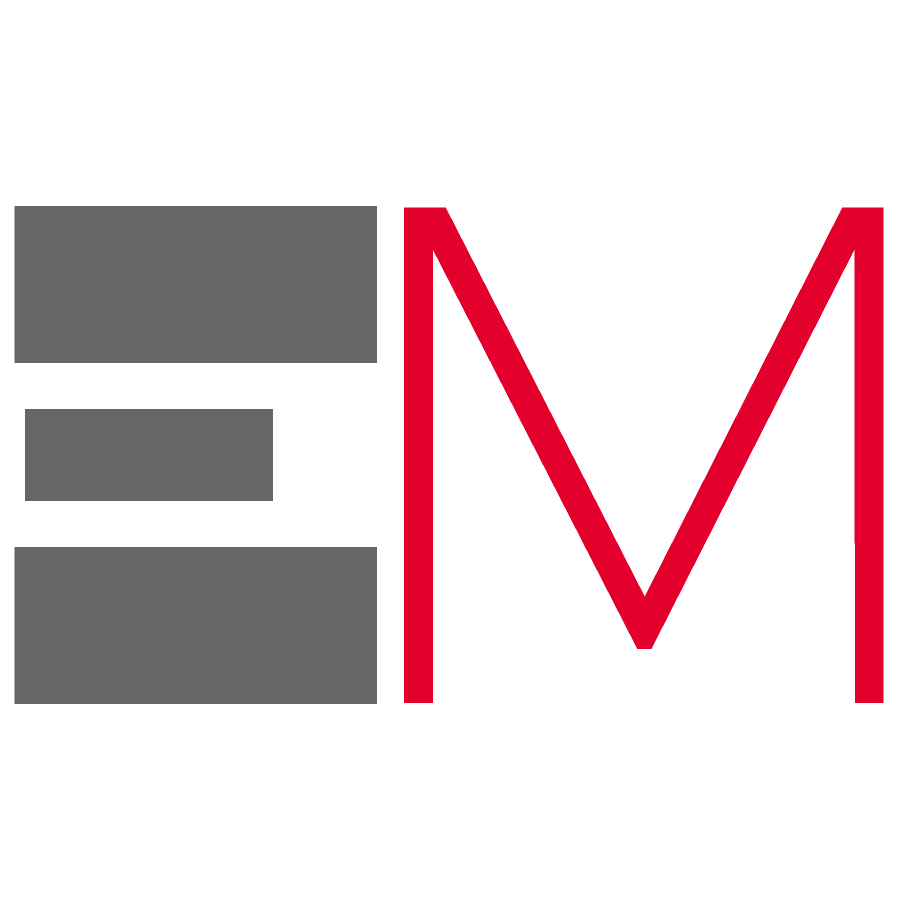SANITIZATION Machine Line Dedicated to COVID-19
Engmotion Steril-ONE line incorporates a series of devices dedicated to Disinfect sensitive sites through Ultra-Violet Germicidal Irradiation (UVGI) technology of short-wave UV-C ultraviolet radiation.
The International Ultraviolet Association (IUVA) believes that UV disinfection technologies can play a role in a multiple barrier approach to reducing the transmission of the virus causing COVID-19, SARS-CoV-2, based on current disinfection data and empirical evidence - see new dedicated webpage: http://www.iuva.org/COVID-19.
The same evaluation comes from The American Society of Heating, Refrigerating and Air-Conditioning Engineers (ASHRAE), that recommends ultraviolet germicidal irradiation as a strategy for dealing with the transmission of COVID-19 disease (ASHRAE 2020).
The International Ultraviolet Association (IUVA) believes that UV disinfection technologies can play a role in a multiple barrier approach to reducing the transmission of the virus causing COVID-19, SARS-CoV-2, based on current disinfection data and empirical evidence - see new dedicated webpage: http://www.iuva.org/COVID-19.
The same evaluation comes from The American Society of Heating, Refrigerating and Air-Conditioning Engineers (ASHRAE), that recommends ultraviolet germicidal irradiation as a strategy for dealing with the transmission of COVID-19 disease (ASHRAE 2020).
SANITIZATION TARGETS
-
 Sanitization environments: airports, hospitals, big environments, structured companies
Sanitization environments: airports, hospitals, big environments, structured companies -
 Sanitization environments: small or medium-sized companies, offices, restaurants with few architectural barriers.
Sanitization environments: small or medium-sized companies, offices, restaurants with few architectural barriers. -
 Sanitization environments: small sized targets or mobile structures: buses, helicopter cabins, ambulances, dental clinics, boats.
Sanitization environments: small sized targets or mobile structures: buses, helicopter cabins, ambulances, dental clinics, boats. -
 Sanitization environments: - Emergency rooms, hospitals, medical clinics, operating rooms, residences for the elderly, NEW TECHNOLOGY
Sanitization environments: - Emergency rooms, hospitals, medical clinics, operating rooms, residences for the elderly, NEW TECHNOLOGY
UVC Technical Data, Literature and Great Competitors!
UVC Technical Data, Additional Info and related specifications
UVC Relevant Literature References for Robotics applications
Current studies and testing of Steril One UVC devices
UVC FAR Technical Data
Steril-ONE S-Robot
Sanitization environments: hospital rooms, nursing homes, dental offices, companies without too many architectural barriers.
Need: rapid execution of sanitization.
Steril-ONE S-Robot is a hand-held device with a high sanitizing power
The Steril-one S-Robot is portable manually with a sanitizing system consisting of 8 UVC germicidal lamps, at 254 nm. The lamps do not emit ozone, thus not requiring a subsequent aeration of the room.
The lamps have a sterilization efficiency of 99.9%. The sanitization time varies between 4 and 20 minutes depending on the room to be sanitized, the space volume is automatically calculated by the intelligent system on board of the machine.
The device is operated by a smart tablet PC, managed by an operator.
The machine is equipped with a human presence recognition system and an acoustic warning for the decontamination cycle start. It can also identify closed containment doors, if the security management system allows.
Included WiFi IoT, allows remote control and monitoring of the device, as well as for remote programming of routes and activation times.
This device has an implemented case study for Dental Clinics thanks to the cooperation with Dr. Thomas Fischer. Thanks to this partnership, the Steril One S (and the S mini as well) has been improved with all the requirements for this application. Follow the link to know our Lead User in dental and orthodontic cathegory: www.dr-fischer.it
SAFETY FEATURES
- 360 °motion detectors. In case of motion detection during the disinfection cycle, the UVC lamps are switched off immediately.
- Adjustable sterilization start delay
- Emergency stop button
- LEDs indicating device status
____________________________________
Item Code: STRL1-ST02-20-01
Dimensions: 1480 mm H X 540 mm X 540 mm
Weight: 40 Kg
UVC Lamp lifespan: 9.000 h
Total Power:UVC Radiation power UVC 17,5 W/lamp (Total 140 W UVC) and electric power/lamp 55 W (Total 400 W)
Lamps number: 8
Cycle Time and Safe Delay time set by Wifi and APP
Integration in local Wifi, IP TCP protocols available. Industry 4.0 ready.
Two levels of automatic reports available. Export option available
Mean time to Sanitize a 25 square meters room is about 10 minutes
Control WIFI/APP
____________________________________
The Steril-ONE S-Robot device can have the following configurations:
- Battery-less version to be directly connected to the mains line
- 30 Ah Battery (about 1.5 hours of battery life with 8 lamps configuration)
Sanitization environments: hospital rooms, nursing homes, companies without too many architectural barriers.
Need: rapid execution of sanitization.
Steril-ONE S-Robot is a hand-held device with a high sanitizing power
EN Brochure - IT Brochure - Slo Brochure
Need More information? Contact us at: sales@engmotion.com
What we provide to our customer to test the efficiency of our Steril-ONE S UVC system and to give confidence of pathogen neutralization to their customers?
- UVC Dosimeters by Intellego Technologies, that are able
help you visibly demonstrate the success of your UV-C disinfection systems. #SeeYourSuccess
Intellego Technologies' UVC Dosimeters give you a fast, easy and effective way to validate that surfaces have been properly been disinfected. The indicator shows the amount of UVC radiation exposure in a specific spot, through a color change which occurs at a precise energy level. The color change from yellow to orange to pink can be correlated to a log reduction of microbiology samples e.g. MRSA and C.diff.
Facts about UVC Dosimeters
Need: rapid execution of sanitization.
Steril-ONE S-Robot is a hand-held device with a high sanitizing power
The Steril-one S-Robot is portable manually with a sanitizing system consisting of 8 UVC germicidal lamps, at 254 nm. The lamps do not emit ozone, thus not requiring a subsequent aeration of the room.
The lamps have a sterilization efficiency of 99.9%. The sanitization time varies between 4 and 20 minutes depending on the room to be sanitized, the space volume is automatically calculated by the intelligent system on board of the machine.
The device is operated by a smart tablet PC, managed by an operator.
The machine is equipped with a human presence recognition system and an acoustic warning for the decontamination cycle start. It can also identify closed containment doors, if the security management system allows.
Included WiFi IoT, allows remote control and monitoring of the device, as well as for remote programming of routes and activation times.
This device has an implemented case study for Dental Clinics thanks to the cooperation with Dr. Thomas Fischer. Thanks to this partnership, the Steril One S (and the S mini as well) has been improved with all the requirements for this application. Follow the link to know our Lead User in dental and orthodontic cathegory: www.dr-fischer.it
SAFETY FEATURES
- 360 °motion detectors. In case of motion detection during the disinfection cycle, the UVC lamps are switched off immediately.
- Adjustable sterilization start delay
- Emergency stop button
- LEDs indicating device status
____________________________________
Item Code: STRL1-ST02-20-01
Dimensions: 1480 mm H X 540 mm X 540 mm
Weight: 40 Kg
UVC Lamp lifespan: 9.000 h
Total Power:UVC Radiation power UVC 17,5 W/lamp (Total 140 W UVC) and electric power/lamp 55 W (Total 400 W)
Lamps number: 8
Cycle Time and Safe Delay time set by Wifi and APP
Integration in local Wifi, IP TCP protocols available. Industry 4.0 ready.
Two levels of automatic reports available. Export option available
Mean time to Sanitize a 25 square meters room is about 10 minutes
Control WIFI/APP
____________________________________
The Steril-ONE S-Robot device can have the following configurations:
- Battery-less version to be directly connected to the mains line
- 30 Ah Battery (about 1.5 hours of battery life with 8 lamps configuration)
Sanitization environments: hospital rooms, nursing homes, companies without too many architectural barriers.
Need: rapid execution of sanitization.
Steril-ONE S-Robot is a hand-held device with a high sanitizing power
EN Brochure - IT Brochure - Slo Brochure
Need More information? Contact us at: sales@engmotion.com
What we provide to our customer to test the efficiency of our Steril-ONE S UVC system and to give confidence of pathogen neutralization to their customers?
- UVC Dosimeters by Intellego Technologies, that are able
help you visibly demonstrate the success of your UV-C disinfection systems. #SeeYourSuccess
Intellego Technologies' UVC Dosimeters give you a fast, easy and effective way to validate that surfaces have been properly been disinfected. The indicator shows the amount of UVC radiation exposure in a specific spot, through a color change which occurs at a precise energy level. The color change from yellow to orange to pink can be correlated to a log reduction of microbiology samples e.g. MRSA and C.diff.
Facts about UVC Dosimeters
- Patented photochromatic ink changes color to indicate the level of UVC irradiation on surfaces
- Able to measure specific wavelengths of UVC radiation
- Can be correlated with a log reduction of microbiology samples e.g. MRSA and C.diff.
- Proven functionality through hospital testing
- Can be customized to change color at specific energy levels
- Developed, tested, approved and manufactured in Sweden
- Tested for functionality at Swedish Technical Research Institute (RISE)
- Recommended for use every time a UVC disinfection cycle is run
- With regular use, UVC Dosimeters can help hospital facilities recognize when it's time to replace UV-C bulbs.
Steril-ONE Smini-Robot
Sanitization environments: offices or spaces of small or medium size with few architectural barriers.
Need: sanitization control.
Steril-ONE Smini-Robot is an advanced device, which can satisfy the needs of many facilities with needing offices or medium-sized spaces sanitization.
The Steril-one S-Robot is portable manually with a sanitizing system consisting of 2 UVC germicidal lamps, at 254 nm. The lamps do not emit ozone, thus not requiring a subsequent aeration of the room.
The lamps have a sterilization efficiency of 99.9%. The sanitization time varies between 15 and 30 minutes depending on the room to be sanitized.
The device is operated by a smart tablet PC, managed by an operator.
The machine is equipped with a human presence recognition system and an acoustic warning for the decontamination cycle start.
Included WiFi IoT, allows remote control and monitoring of the device, as well as for remote programming of activation times.
SAFETY FEATURES
- 360 °motion detectors. In case of motion detection during the disinfection cycle, the UVC lamps are switched off immediately.
- Adjustable sterilization start delay
- Emergency stop button
- LEDs indicating device status
____________________________________
The device Steril-ONE Smini- can have the following configurations:
Code - Part Number: STRL1-SM03-20-01
Dimensions: 1000 mm H X400 mm X 250 mm
Weight: 12 Kg
LiFePo4 Battery 10 Ah: (1,5 h continuous working)
UVC Lamp lifespan: 15000 h
Total Power: UVC 64 W (Electrical Power160 W)
Lamps number: 2
Cycle Time and Safe Delay time set by Wifi and APP
Integration in local Wifi, IP TCP protocols available. Industry 4.0 ready.
Two levels of automatic reports available. Export option available
Mean time to Sanitize a 15 square meters room is about 10 minutes
Control WIFI/APP
EN Brochure - IT Brochure
Need More information? Contact us at: sales@engmotion.com
Need: sanitization control.
Steril-ONE Smini-Robot is an advanced device, which can satisfy the needs of many facilities with needing offices or medium-sized spaces sanitization.
The Steril-one S-Robot is portable manually with a sanitizing system consisting of 2 UVC germicidal lamps, at 254 nm. The lamps do not emit ozone, thus not requiring a subsequent aeration of the room.
The lamps have a sterilization efficiency of 99.9%. The sanitization time varies between 15 and 30 minutes depending on the room to be sanitized.
The device is operated by a smart tablet PC, managed by an operator.
The machine is equipped with a human presence recognition system and an acoustic warning for the decontamination cycle start.
Included WiFi IoT, allows remote control and monitoring of the device, as well as for remote programming of activation times.
SAFETY FEATURES
- 360 °motion detectors. In case of motion detection during the disinfection cycle, the UVC lamps are switched off immediately.
- Adjustable sterilization start delay
- Emergency stop button
- LEDs indicating device status
____________________________________
The device Steril-ONE Smini- can have the following configurations:
Code - Part Number: STRL1-SM03-20-01
Dimensions: 1000 mm H X400 mm X 250 mm
Weight: 12 Kg
LiFePo4 Battery 10 Ah: (1,5 h continuous working)
UVC Lamp lifespan: 15000 h
Total Power: UVC 64 W (Electrical Power160 W)
Lamps number: 2
Cycle Time and Safe Delay time set by Wifi and APP
Integration in local Wifi, IP TCP protocols available. Industry 4.0 ready.
Two levels of automatic reports available. Export option available
Mean time to Sanitize a 15 square meters room is about 10 minutes
Control WIFI/APP
EN Brochure - IT Brochure
Need More information? Contact us at: sales@engmotion.com
UVC - TECNICAL DATA
UV-C - TECNICAL DATA (1)
For many years, ultraviolet (UV) germicidal lamps have been used for disinfection of air and surfaces within hospitals, care homes, laboratories and many other organisations where hygiene and cleanliness are of utmost importance. UV lamps are a proven technology when it comes to reducing bacteria, viruses and other harmful microorganisms that pose a risk to human health.
In light of the current Coronavirus outbreak, UV is one of the many technologies available and being utilised to help reduce and control the spread and it has been valued as a performing one
see International UltraViolet Association (IUVA) article and UV air and surface treatment recommendation from The American Society of Heating, Refrigerating and Air-Conditioning Engineers (ASHRAE)
What is UV?
Ultraviolet (UV) light is part of the electromagnetic spectrum. UV is further divided into three wavelength ranges:
UV-A (near UV) - from 315 nm to 400 nm
UV-B (middle UV) - from 280 nm to 315 nm
UV-C (far UV) - from 180 nm to 280 nm
VUV (vacuum UV) – from 10 to 180 nm
UV-A radiations are easily transmitted through air and glass; they penetrate through the epidermis and the anterior ocular media. (NEHC 1992; Int. UV. Association FAQs)
UV-B and UV-C are transmitted through air and quartz, but absorbed by ordinary glass. These wavelengths are also absorbed by the ozone layer of the upper atmosphere and generally do not reach the earth's surface. UV radiation below 315 nm is primarily absorbed by the cornea or by the top epithelial skin layer. (NEHC 1992; Int. UV. Association FAQs)
Radiations with wavelengths from 10 nm to 180 nm are sometimes referred to as "vacuum" or "extreme" UV. These wavelengths are not transmitted through air; thus, biological studies on this UV range are of little concern. (NEHC 1992; Int. UV. Association FAQs)
Among UV wavelength ranges, UV-C has the best potential ability to inactivate microorganisms because the wavelength 250-270 nm is strongly and mainly absorbed by the nucleic acids. (Yin 2013)
UV-C lights germicidal function is largely due to the result of thymine dimers formation, which inactivate the microorganism's DNA or RNA, leaving them unable to perform vital cellular functions. (Chanprakon 2019; Spencer 2017; Gostine 2016; Ultraviolet germicidal irradiation handbook 2010; Cutler 2011; CIE 2003).
Most commercial UV-C lamps are low-pressure mercury lamps that emit UV energy at 253.7 nm, very close to the optimal wavelength.
What are the beneficial uses of germicidal UV?
UV germicidal technology is a non-chemical approach to disinfection. In this method, no chemical agent is added to the space/room to be disinfected, which makes this process safe, simple, and inexpensive; moreover, it requires very low maintenance. UV sanitizers utilize germicidal lamps that are designed to give a certain dosage of UV radiation. The germicidal exposure dose is a function of the UV irradiance multiplied by the exposure time; you must have a certain amount of both for a successful design.
Here are just a few of the applications…
Warnings in case of UVC light high exposure
UV-C radiation is a low-penetrating form of UV as compared to UV-A or UV-B radiation. Measurements on human tissue show that the amount of UV-C transmitted through the epidermis is minimal (Diffey 1983; Bruls 1984]
Nonetheless, UV-C radiation is invisible to humans and exposure to U-VC radiation may have an effect on health, in particular on eye and skin (International Organization for Standardization 2016).
Currently available data do not allow to assess quantitative the risk of cancer associate to UV-C lamps exposure. The attenuation provided by the stratum corneum and epithelial tissues of the skin greatly should reduce carcinogenic risk; however, UV-C can be capable of inducing skin cancer in humans (SCHEER 2017)
Precautions are recommended when using UV-C light devices. Warning signs should be placed in certain locations to protect personnel or passersby from UV hazards. Appropriate locations include access doors, air-handling unit outside walls, equipment room doors, etc.
The EU health agency's safety guidelines on the use of UVC- sources can be found here.
Eye damage can result in photokeratitis and photokeratoconjunctivitis. Symptoms can include an abrupt sensation comparable to sand in eyes , tearing, and eye pain. Such symptoms may appear within 1-12 h after exposure and resolve fully within 24-48 h. Acute overexposure to UV-C radiation may cause incapacity due to eye discomfort, but this generally regresses after several days, leaving no permanent damage. Cutaneous damage consists of erythema, a reddening of the skin similar to sunburn. The maximum effect of erythema occurs at a wavelength of 297 nm (therefore, in the UV-B band). UV-C radiation at a wavelength of 254 nm is less effective in causing erythema (CIE 2010, International Organization for Standardization 2016)
So are UVC devices safe?
Like any disinfection system, UV-C devices must be used in a proper way. Some devices also produce ozone as part of their cycle, others produce light and heat like an arc welder, others move during their cycles. Hence, general machine-human safety needs to be considered with all disinfection devices, and these considerations should be addressed in the operating manual, in the user training, and appropriate safety compliance.
The International Commission on Illumination (CIE) completed a review of UV-C photocarcinogenesis risks from germicidal lamps. They concluded that overexposure to UV-C radiation include transient corneal and conjunctival irritation and skin irritation (erythema), disappearing within 24–48 hours. UV-C radiation is not currently known to produce lasting biological damage. The attenuation provided by the stratum corneum and epithelial tissues of the skin greatly should reduce carcinogenic risk; however, according to European Commission Scientific Committee on Health, Environmental and Emerging Risks, UV-C are capable of inducing skin cancer in humans. Currently available data do not allow to assess quantitative the risk of cancer associate to UV-C lamps exposure. Ozone may also be produced from UV-C lamps emitting wavelengths shorter than 240 nm. Exposure to ozone, above threshold levels, presents a risk of a variety of symptoms and diseases associated with the respiratory tract, particularly in sensitive individuals
_________________________________________________________
UV-C Photodegradation of Materials
The UV-C energy used in HVAC applications can be detrimental to organic materials. If the UV is not applied properly and vulnerable materials are not shielded or substituted, substantial degradation can occur, resulting in decreased filtration efficiency, defective seals, and damaged system components, causing a possible loss in system performance and/or potential safety concerns (2016 ASHRAE Handbook; Kauffman 2010; NEHC 1992)
The extent of material degradation caused by UV-C energy varies greatly with the material, UV intensity, length of exposure and design of the component. The effects of UV on materials are dose-dependent, as they are for microorganisms (Kowalski 2009).
Short-term UVC exposures (1000–11000 μW/cm2 irradiance level range) were performed by Kauffman (Kauffman 2010). Based on the relative degradation of the tested samples, the materials were ranked in four categories with respect to the UV-C resistance as follows:
(A) No effect (inorganic materials only; all organic materials exhibit some degradation)
(B) Minor effect (mainly cosmetic changes, not likely to affect materials ability to perform its duty)
(C) Moderate effect (some cracking/pitting suggesting protection/shielding should be considered)
(D) Severe effect (structural damage, not recommended)
Nevertheless, these damages were observed only after days or weeks of exposure at irradiances > 1000 μW/cm2. For a lower irradiance range (50–1000 μW/cm2) very long exposure time (months) are required to substantially damage materials (Wolf 2017)
Some common polymers such as PE show signs of degradation at UV doses (10-100 J/cm2) that are several hundred or even thousand time higher than that required to inactivate microorganisms (Kaczmarek 2006)
With limited time applications such as the case of UV-C sanitizer robots, the material photodegradation is not that critical. It can effect only very thin materials.
Germicidal lamps and ozone
Ozone (O3) is a gas molecule that contains three oxygen atoms. Ozone is present in low concentrations throughout the earth's atmosphere. The ozone layer protects the Earth's stratosphere from the Sun's ultraviolet radiation, which could hinder the life on Earth. At sea level, however, a high concentration of ozone can be toxic to plants and animals. In humans ozone can induce adverse health effects in the respiratory tract (nose, throat and airways), in the lungs, and at higher concentrations, in the eyes.
UV light can react with oxygen and/or ozone molecules, depending on its wavelength:
The tubes of most germicidal lamps are made of doped quartz glass, which blocks the transmission of the 185 nm line (ozone-producing wavelength) and allows the 253.7 nm radiation to pass through. Therefore, germicidal lamps with doped quartz tube cannot produce ozone. On the other hand, a pure quartz tube is transparent to all UV wavelengths and permits the radiation of the two UV-C peaks (254 nm and 185 nm) to be emitted. It is therefore possible to categories germicidal lamps into:
References:
NASA Ozone Facts
UV-Resource: Why UV-C Cannot Produce Ozone
Scientific Committee on Health, Environmental and Emerging Risks of European Commission
Oxidation Technologies LCC - Ozone production from UV
What if a germicidal lamp breaks?
Low pressure mercury vapor lamps, often called "germicidal lamps", are a highly efficient electric discharge lamps in which UV light is emitted (predominantly at wavelengths of 253.7 and 185 nm ) by excited atoms of vaporized mercury (Scientific American, Working Knowledge: Compact Fluorescent Lightbulbs; Lamptech, the Mercury Vapor Lamp; Edison Tech Center, Mercury Vapor Lamps); EnergyStar.gov, Learn about compact fluorescence bulbs).
Mercury is a toxic heavy metal that can harm biological organisms if released. When a mercury-containing lamp (such as a germicidal lamp) breaks or explodes, mercury contamination can occur. Possible mercury contaminations have to be properly handled.
Mercury may have toxic effects on the nervous, digestive and immune systems, and on lungs, kidneys, skin and eyes. Mild, subclinical signs of central nervous system toxicity can be seen in workers exposed to an elemental mercury level in the air of 20 μg/m3 or more for several years (World Health Organization, Mercury and health)
Germicidal lamps contain an average of 7.6 mg of mercury per lamp, with a high of 70 mg and a low of 5.5 mg (IMERC Fact Sheet - Mercury Use in Lighting). According to another source, germicidal lamps contain between 10 and 50 mg of mercury per lamp.
According to Environmental Defense Fund (see "Mercury Risk in CFLs: The Facts"), the amount of mercury in a compact fluorescent light bulb (which use a technology very similar to that of germicidal lamps) is very small, almost one thousand times less than the amount of mercury found in old thermometers. Even if a bulb breaks, less than one milligram of mercury might become airborne in the room during the first eight hours, and only a fraction of that would be breathed in. Briefly, the exposure from breaking a mercury-containing bulb is in the same range as that deriving from eating a can of tuna fish. According to another study ("Release of Mercury From Broken Fluorescent Bulbs"), between 17% and 40% of the mercury in broken fluorescent bulbs can be released to in a two-week period. In this case, 2-20 mg of mercury could be released from a broken germicidal lamp.
According to an E.U. Scientific Committee on Health and Environmental Risks opinion, when a light bulb breaks, the amount of mercury vapor in an average room could briefly exceed the safety levels. However, these levels take into account adults who are regularly exposed to such quantities for 40-year work life, so they are not applicable to very short-term exposure. Most of the released vapor turns back to liquid form very quickly shortly after the breakage, therefore the level of mercury vapor becomes too low to cause any harm. According to an article published in Environmental Health Perspectives, only a tiny fraction of the mercury is actually released when the bulb breaks. A study in the Journal of Environmental Engineering Science reports that even if left unattended for 24 hours, a broken bulb will release from 0.04 to 0.7 milligrams of mercury. The researchers found that it would take weeks for the amount of mercury vapor in the room to reach hazardous levels. This can be avoided by quickly following a safe cleanup procedure.
For example, U.S. Environmental Protection Agency recommendation for cleaning up:
Other similar cleaning procedure: OSRAM –handling broken lamps
Other references:
North Carolina Public Health Service document concerning mercury-containing lamp bulbs
Lighting Europe 2020 - Frequently Asked Questions on mercury related regulations for light sources
National Geographic – Myths and Facts on fluorescent light bulbs
Scientific American - Are Compact Fluorescent Lightbulbs Dangerous?
Lamprecycle.org – Broken Bulbs
Lamprecycle.org – Dangerous mercury in compact fluorescent lights?
E.U. Scientific Committee on Health, Environm. and Emerging Risks - Opinion on mercury inside light bulbs
For many years, ultraviolet (UV) germicidal lamps have been used for disinfection of air and surfaces within hospitals, care homes, laboratories and many other organisations where hygiene and cleanliness are of utmost importance. UV lamps are a proven technology when it comes to reducing bacteria, viruses and other harmful microorganisms that pose a risk to human health.
In light of the current Coronavirus outbreak, UV is one of the many technologies available and being utilised to help reduce and control the spread and it has been valued as a performing one
see International UltraViolet Association (IUVA) article and UV air and surface treatment recommendation from The American Society of Heating, Refrigerating and Air-Conditioning Engineers (ASHRAE)
What is UV?
Ultraviolet (UV) light is part of the electromagnetic spectrum. UV is further divided into three wavelength ranges:
UV-A (near UV) - from 315 nm to 400 nm
UV-B (middle UV) - from 280 nm to 315 nm
UV-C (far UV) - from 180 nm to 280 nm
VUV (vacuum UV) – from 10 to 180 nm
UV-A radiations are easily transmitted through air and glass; they penetrate through the epidermis and the anterior ocular media. (NEHC 1992; Int. UV. Association FAQs)
UV-B and UV-C are transmitted through air and quartz, but absorbed by ordinary glass. These wavelengths are also absorbed by the ozone layer of the upper atmosphere and generally do not reach the earth's surface. UV radiation below 315 nm is primarily absorbed by the cornea or by the top epithelial skin layer. (NEHC 1992; Int. UV. Association FAQs)
Radiations with wavelengths from 10 nm to 180 nm are sometimes referred to as "vacuum" or "extreme" UV. These wavelengths are not transmitted through air; thus, biological studies on this UV range are of little concern. (NEHC 1992; Int. UV. Association FAQs)
Among UV wavelength ranges, UV-C has the best potential ability to inactivate microorganisms because the wavelength 250-270 nm is strongly and mainly absorbed by the nucleic acids. (Yin 2013)
UV-C lights germicidal function is largely due to the result of thymine dimers formation, which inactivate the microorganism's DNA or RNA, leaving them unable to perform vital cellular functions. (Chanprakon 2019; Spencer 2017; Gostine 2016; Ultraviolet germicidal irradiation handbook 2010; Cutler 2011; CIE 2003).
Most commercial UV-C lamps are low-pressure mercury lamps that emit UV energy at 253.7 nm, very close to the optimal wavelength.
What are the beneficial uses of germicidal UV?
UV germicidal technology is a non-chemical approach to disinfection. In this method, no chemical agent is added to the space/room to be disinfected, which makes this process safe, simple, and inexpensive; moreover, it requires very low maintenance. UV sanitizers utilize germicidal lamps that are designed to give a certain dosage of UV radiation. The germicidal exposure dose is a function of the UV irradiance multiplied by the exposure time; you must have a certain amount of both for a successful design.
Here are just a few of the applications…
- Drinking Water
- Airstream disinfection
- Food Processing
- Medical (see Engmotion's application in automation for syringe filling machines or citostatics and antibiotics preparation machines)
- Industries
Warnings in case of UVC light high exposure
UV-C radiation is a low-penetrating form of UV as compared to UV-A or UV-B radiation. Measurements on human tissue show that the amount of UV-C transmitted through the epidermis is minimal (Diffey 1983; Bruls 1984]
Nonetheless, UV-C radiation is invisible to humans and exposure to U-VC radiation may have an effect on health, in particular on eye and skin (International Organization for Standardization 2016).
Currently available data do not allow to assess quantitative the risk of cancer associate to UV-C lamps exposure. The attenuation provided by the stratum corneum and epithelial tissues of the skin greatly should reduce carcinogenic risk; however, UV-C can be capable of inducing skin cancer in humans (SCHEER 2017)
Precautions are recommended when using UV-C light devices. Warning signs should be placed in certain locations to protect personnel or passersby from UV hazards. Appropriate locations include access doors, air-handling unit outside walls, equipment room doors, etc.
The EU health agency's safety guidelines on the use of UVC- sources can be found here.
Eye damage can result in photokeratitis and photokeratoconjunctivitis. Symptoms can include an abrupt sensation comparable to sand in eyes , tearing, and eye pain. Such symptoms may appear within 1-12 h after exposure and resolve fully within 24-48 h. Acute overexposure to UV-C radiation may cause incapacity due to eye discomfort, but this generally regresses after several days, leaving no permanent damage. Cutaneous damage consists of erythema, a reddening of the skin similar to sunburn. The maximum effect of erythema occurs at a wavelength of 297 nm (therefore, in the UV-B band). UV-C radiation at a wavelength of 254 nm is less effective in causing erythema (CIE 2010, International Organization for Standardization 2016)
So are UVC devices safe?
Like any disinfection system, UV-C devices must be used in a proper way. Some devices also produce ozone as part of their cycle, others produce light and heat like an arc welder, others move during their cycles. Hence, general machine-human safety needs to be considered with all disinfection devices, and these considerations should be addressed in the operating manual, in the user training, and appropriate safety compliance.
The International Commission on Illumination (CIE) completed a review of UV-C photocarcinogenesis risks from germicidal lamps. They concluded that overexposure to UV-C radiation include transient corneal and conjunctival irritation and skin irritation (erythema), disappearing within 24–48 hours. UV-C radiation is not currently known to produce lasting biological damage. The attenuation provided by the stratum corneum and epithelial tissues of the skin greatly should reduce carcinogenic risk; however, according to European Commission Scientific Committee on Health, Environmental and Emerging Risks, UV-C are capable of inducing skin cancer in humans. Currently available data do not allow to assess quantitative the risk of cancer associate to UV-C lamps exposure. Ozone may also be produced from UV-C lamps emitting wavelengths shorter than 240 nm. Exposure to ozone, above threshold levels, presents a risk of a variety of symptoms and diseases associated with the respiratory tract, particularly in sensitive individuals
_________________________________________________________
UV-C Photodegradation of Materials
The UV-C energy used in HVAC applications can be detrimental to organic materials. If the UV is not applied properly and vulnerable materials are not shielded or substituted, substantial degradation can occur, resulting in decreased filtration efficiency, defective seals, and damaged system components, causing a possible loss in system performance and/or potential safety concerns (2016 ASHRAE Handbook; Kauffman 2010; NEHC 1992)
The extent of material degradation caused by UV-C energy varies greatly with the material, UV intensity, length of exposure and design of the component. The effects of UV on materials are dose-dependent, as they are for microorganisms (Kowalski 2009).
Short-term UVC exposures (1000–11000 μW/cm2 irradiance level range) were performed by Kauffman (Kauffman 2010). Based on the relative degradation of the tested samples, the materials were ranked in four categories with respect to the UV-C resistance as follows:
(A) No effect (inorganic materials only; all organic materials exhibit some degradation)
(B) Minor effect (mainly cosmetic changes, not likely to affect materials ability to perform its duty)
(C) Moderate effect (some cracking/pitting suggesting protection/shielding should be considered)
(D) Severe effect (structural damage, not recommended)
Nevertheless, these damages were observed only after days or weeks of exposure at irradiances > 1000 μW/cm2. For a lower irradiance range (50–1000 μW/cm2) very long exposure time (months) are required to substantially damage materials (Wolf 2017)
Some common polymers such as PE show signs of degradation at UV doses (10-100 J/cm2) that are several hundred or even thousand time higher than that required to inactivate microorganisms (Kaczmarek 2006)
With limited time applications such as the case of UV-C sanitizer robots, the material photodegradation is not that critical. It can effect only very thin materials.
Germicidal lamps and ozone
Ozone (O3) is a gas molecule that contains three oxygen atoms. Ozone is present in low concentrations throughout the earth's atmosphere. The ozone layer protects the Earth's stratosphere from the Sun's ultraviolet radiation, which could hinder the life on Earth. At sea level, however, a high concentration of ozone can be toxic to plants and animals. In humans ozone can induce adverse health effects in the respiratory tract (nose, throat and airways), in the lungs, and at higher concentrations, in the eyes.
UV light can react with oxygen and/or ozone molecules, depending on its wavelength:
- UV wavelengths < 240 nm generate ozone via photolysis of the oxygen molecule
- UV wavelengths between 240-315 nm destroy ozone via photolysis of the ozone molecule
The tubes of most germicidal lamps are made of doped quartz glass, which blocks the transmission of the 185 nm line (ozone-producing wavelength) and allows the 253.7 nm radiation to pass through. Therefore, germicidal lamps with doped quartz tube cannot produce ozone. On the other hand, a pure quartz tube is transparent to all UV wavelengths and permits the radiation of the two UV-C peaks (254 nm and 185 nm) to be emitted. It is therefore possible to categories germicidal lamps into:
- ozone-free lamps, emitting at 254 nm only
- ozone-generating lamps, emitting at 254 nm and 185 nm
References:
NASA Ozone Facts
UV-Resource: Why UV-C Cannot Produce Ozone
Scientific Committee on Health, Environmental and Emerging Risks of European Commission
Oxidation Technologies LCC - Ozone production from UV
What if a germicidal lamp breaks?
Low pressure mercury vapor lamps, often called "germicidal lamps", are a highly efficient electric discharge lamps in which UV light is emitted (predominantly at wavelengths of 253.7 and 185 nm ) by excited atoms of vaporized mercury (Scientific American, Working Knowledge: Compact Fluorescent Lightbulbs; Lamptech, the Mercury Vapor Lamp; Edison Tech Center, Mercury Vapor Lamps); EnergyStar.gov, Learn about compact fluorescence bulbs).
Mercury is a toxic heavy metal that can harm biological organisms if released. When a mercury-containing lamp (such as a germicidal lamp) breaks or explodes, mercury contamination can occur. Possible mercury contaminations have to be properly handled.
Mercury may have toxic effects on the nervous, digestive and immune systems, and on lungs, kidneys, skin and eyes. Mild, subclinical signs of central nervous system toxicity can be seen in workers exposed to an elemental mercury level in the air of 20 μg/m3 or more for several years (World Health Organization, Mercury and health)
Germicidal lamps contain an average of 7.6 mg of mercury per lamp, with a high of 70 mg and a low of 5.5 mg (IMERC Fact Sheet - Mercury Use in Lighting). According to another source, germicidal lamps contain between 10 and 50 mg of mercury per lamp.
According to Environmental Defense Fund (see "Mercury Risk in CFLs: The Facts"), the amount of mercury in a compact fluorescent light bulb (which use a technology very similar to that of germicidal lamps) is very small, almost one thousand times less than the amount of mercury found in old thermometers. Even if a bulb breaks, less than one milligram of mercury might become airborne in the room during the first eight hours, and only a fraction of that would be breathed in. Briefly, the exposure from breaking a mercury-containing bulb is in the same range as that deriving from eating a can of tuna fish. According to another study ("Release of Mercury From Broken Fluorescent Bulbs"), between 17% and 40% of the mercury in broken fluorescent bulbs can be released to in a two-week period. In this case, 2-20 mg of mercury could be released from a broken germicidal lamp.
According to an E.U. Scientific Committee on Health and Environmental Risks opinion, when a light bulb breaks, the amount of mercury vapor in an average room could briefly exceed the safety levels. However, these levels take into account adults who are regularly exposed to such quantities for 40-year work life, so they are not applicable to very short-term exposure. Most of the released vapor turns back to liquid form very quickly shortly after the breakage, therefore the level of mercury vapor becomes too low to cause any harm. According to an article published in Environmental Health Perspectives, only a tiny fraction of the mercury is actually released when the bulb breaks. A study in the Journal of Environmental Engineering Science reports that even if left unattended for 24 hours, a broken bulb will release from 0.04 to 0.7 milligrams of mercury. The researchers found that it would take weeks for the amount of mercury vapor in the room to reach hazardous levels. This can be avoided by quickly following a safe cleanup procedure.
For example, U.S. Environmental Protection Agency recommendation for cleaning up:
- Leave the room; air out the room for 5-10 minutes by opening a window or door to the outdoor environment; shut off the central forced air heating/air-conditioning system; collect materials needed to clean up broken bulb.
- Do not use a vacuum cleaner: vacuuming is not recommended, since it could spread mercury-containing powder or mercury vapor. Collect carefully broken glass and visible powder. Scoop up glass fragments and powder using stiff paper or cardboard. Use sticky tape to pick up any remaining small glass fragments and powder. Place cleanup materials in a sealable container.
Other similar cleaning procedure: OSRAM –handling broken lamps
Other references:
North Carolina Public Health Service document concerning mercury-containing lamp bulbs
Lighting Europe 2020 - Frequently Asked Questions on mercury related regulations for light sources
National Geographic – Myths and Facts on fluorescent light bulbs
Scientific American - Are Compact Fluorescent Lightbulbs Dangerous?
Lamprecycle.org – Broken Bulbs
Lamprecycle.org – Dangerous mercury in compact fluorescent lights?
E.U. Scientific Committee on Health, Environm. and Emerging Risks - Opinion on mercury inside light bulbs
UVC - LITERATURE
UV-C light has been used extensively for more than 40 years in disinfecting drinking water, waste water, air, pharmaceutical products, and surfaces against a whole suite of human pathogens (see Fluence UV Dose Required review from IUVA).
Health care-associated infections (HAIs) represent a common complication for hospitalized patients with significant implications on the health system quality. Contaminated surfaces in health care facilities are an insidious mode of secondary transmission of common pathogens
UV light for decontamination of such surfaces can be an effective way to reduce transmission of infectious pathogens. UV-C light inactivates the microorganism's DNA or RNA (through the formation of thymine dimers), leaving them unable to perform vital cellular functions. (Chanprakon 2019; Spencer 2017; Gostine 2016; Ultraviolet germicidal irradiation handbook 2010; Cutler 2011; CIE 2003).
UV-C germicidal devices have been shown to reduce pathogens on surfaces by log reduction factors between 1 and 5, depending on device, time and type of microorganism. Some organisms are more susceptible to UV-C disinfection than others, but all bacteria and viruses tested to date can be killed or inactivated by the appropriate dose. In a sterilization context, the log reduction (sometimes R, reduction factor, or D, decimal reduction) is defined as the dose required to achieve a certain reduction (inactivation or kill) of relevant microorganisms. For example, R = 1 (D90) means kill or inactivation of 90% of pathogens; R = 2 reduction of 99%, R = 3 reduction of 99.9% and so on. The reduction factor is proportional to UV-C dose, which is the result of the product between UV intensity and exposure time.
A clinical study, conducted on 36.000 patient-days, concluded that UV-C disinfection can reduce HAIs of about 35 %.; another work pointed out a reduction of 30-70% in Clostridium difficile (C. diff.), methicillin-resistant Staphylococcus aureus (MRSA) and others pathogens after use of UV-C sanitizers. An article in Infection Control and Hospital Epidemiology demonstrated the effectiveness of UV-C radiation in reducing more than 99.9% of bacteria on surfaces within 15 minutes, and eliminating the 99.9% of bacteria spores within 50 minutes.
Data from different studies show that an average UV-C dose of 80-100 mJ/cm2 is able to kill or inactivate the most common pathogens (with R = 3)
(References: Yin et al., "Light based anti-infectives: ultraviolet C irradiation,photodynamic therapy, blue light, and beyond", Current Opinion in Pharmacology 2013; Coohill et al., "Overview of the Inactivation by 254 nm Ultraviolet Radiation of Bacteria with Particular Relevance to Biodefense" Photochemistry and Photobiology 2008; Conner-Kerr et al., "The effects of ultraviolet radiation on antibiotic-resistant bacteria in vitro", Ostomy Wound Manage 1998; Sullivan et al., "A comparative study of the effects of UVC irradiation on select procaryotic and eucaryotic wound pathogens", Ostomy Wound Manage 2000)
UV-C light is capable to inactivate at least two coronaviruses (SARS-CoV-1 and MERS-CoV) that are near-relatives of the COVID-19 virus (Tsunetsugu-Yokota 2008; Bedell et al. 2016)
The International Ultraviolet Association (IUVA), taking into account current disinfection data and empirical evidence, believes that UV disinfection technologies can be used effectively to reduce the transmission of the virus causing COVID-19 (IUVA Fact Sheet on UV Disinfection for COVID-19). The average UV dose for R=1 inactivation of the virus causing COVID-19 has been estimated in 6.7 mJ/cm2. (2020 COVID-19 Ultraviolet Susceptibility - Technical Report). Although there are no specific data available for COVID-19, the value for R=3 inactivation dose for a wide range of tested virus lies between 20 and 150 mJ/cm2.
Further readings:
Lindblad et al., "Ultraviolet-C decontamination of a hospital room: Amount of UV light needed", Burns (2019);
Yin et al., "Light based anti-infectives: ultraviolet C irradiation, photodynamic therapy, blue light, and beyond", Current Opinion in Pharmacology (2013);
Gostine et al., "Evaluating the effectiveness of ultraviolet-C lamps for reducing keyboard contamination in the intensive care unit: A longitudinal analysis", American Journal of Infection Control (2013)
Boyce et al., "Impact of Room Location on UV-C Irradiance and UV-C Dosage and Antimicrobial Effect Delivered by a Mobile UV-C Light Device" - Infection Control and Hospital Epidemiology (2016);
Simmons et al., "Role of Ultraviolet Disinfection in the Prevention of Surgical Site Infections", Ultraviolet Light in Human Health, Diseases and Environment (2017).
"Ultraviolet C irradiation: an alternative antimicrobial approach to localized infections?", Dai et al. 2012, Expert Review of Anti-infective Therapy 10:185-195; doi: 10.1586/eri.11.166
ISO 15714:2019 Method of evaluating the UV dose to airborne microorganisms transiting in-duct ultraviolet germicidal irradiation devices (International Organization for Standardization 2019)
W. Kowalski, Ultraviolet Germicidal Irradiation Handbook, C Springer-Verlag Berlin Heidelberg 2009.
For purifiers and UV-C machine design: 2016 ASHRAE Handbook—HVAC Systems and Equipment – Chapter 17: Ultraviolet Lamp Systems
FDA guidelines for Sterilizers during Covid-19 Pandemia
Specific literature for best evaluation in choosing a UV-C Robot machine:
Spencer et al., "A model for choosing an automated ultraviolet-C disinfection system and building a case for the C-suite: Two case reports" American Journal of Infection Control (2016)
Nerandzic et al., "Evaluation of an automated ultraviolet radiation device for decontamination of Clostridium difficile and other healthcare-associated pathogens in hospital rooms" BMC Infectious Diseases (2010)
Additional reference on UV-C safety:
ISO 15858:2016 UV-C Devices — Safety information — Permissible human exposure (International Organization for Standardization, 2016)
Artificial Optical Radiation Directive 2006/25/EC of the European Parliament and of the Council (2006).
Guidelines on limits of exposure to ultraviolet radiation of wavelengths between 180 nm and 400 nm (incoherent optical radiation), The International Commission on Non-Ionizing Radiation Protection, Health Physics, August 2004, Volume 87, Number 2.
ICNIRP Statement – Protection of Workers against Ultraviolet Radiation – Health Physics, July 2010, Volume 99, Number 1.
Opinion on Biological effects of UV-C radiation relevant to health with particular reference to UV-C lamps of European Commission Scientific Committee on Health, Environmental and Emerging Risks
'Safety First with UV Light' – Risk Management in the Workplace – Paul Jackson.
Health care-associated infections (HAIs) represent a common complication for hospitalized patients with significant implications on the health system quality. Contaminated surfaces in health care facilities are an insidious mode of secondary transmission of common pathogens
UV light for decontamination of such surfaces can be an effective way to reduce transmission of infectious pathogens. UV-C light inactivates the microorganism's DNA or RNA (through the formation of thymine dimers), leaving them unable to perform vital cellular functions. (Chanprakon 2019; Spencer 2017; Gostine 2016; Ultraviolet germicidal irradiation handbook 2010; Cutler 2011; CIE 2003).
UV-C germicidal devices have been shown to reduce pathogens on surfaces by log reduction factors between 1 and 5, depending on device, time and type of microorganism. Some organisms are more susceptible to UV-C disinfection than others, but all bacteria and viruses tested to date can be killed or inactivated by the appropriate dose. In a sterilization context, the log reduction (sometimes R, reduction factor, or D, decimal reduction) is defined as the dose required to achieve a certain reduction (inactivation or kill) of relevant microorganisms. For example, R = 1 (D90) means kill or inactivation of 90% of pathogens; R = 2 reduction of 99%, R = 3 reduction of 99.9% and so on. The reduction factor is proportional to UV-C dose, which is the result of the product between UV intensity and exposure time.
A clinical study, conducted on 36.000 patient-days, concluded that UV-C disinfection can reduce HAIs of about 35 %.; another work pointed out a reduction of 30-70% in Clostridium difficile (C. diff.), methicillin-resistant Staphylococcus aureus (MRSA) and others pathogens after use of UV-C sanitizers. An article in Infection Control and Hospital Epidemiology demonstrated the effectiveness of UV-C radiation in reducing more than 99.9% of bacteria on surfaces within 15 minutes, and eliminating the 99.9% of bacteria spores within 50 minutes.
Data from different studies show that an average UV-C dose of 80-100 mJ/cm2 is able to kill or inactivate the most common pathogens (with R = 3)
(References: Yin et al., "Light based anti-infectives: ultraviolet C irradiation,photodynamic therapy, blue light, and beyond", Current Opinion in Pharmacology 2013; Coohill et al., "Overview of the Inactivation by 254 nm Ultraviolet Radiation of Bacteria with Particular Relevance to Biodefense" Photochemistry and Photobiology 2008; Conner-Kerr et al., "The effects of ultraviolet radiation on antibiotic-resistant bacteria in vitro", Ostomy Wound Manage 1998; Sullivan et al., "A comparative study of the effects of UVC irradiation on select procaryotic and eucaryotic wound pathogens", Ostomy Wound Manage 2000)
UV-C light is capable to inactivate at least two coronaviruses (SARS-CoV-1 and MERS-CoV) that are near-relatives of the COVID-19 virus (Tsunetsugu-Yokota 2008; Bedell et al. 2016)
The International Ultraviolet Association (IUVA), taking into account current disinfection data and empirical evidence, believes that UV disinfection technologies can be used effectively to reduce the transmission of the virus causing COVID-19 (IUVA Fact Sheet on UV Disinfection for COVID-19). The average UV dose for R=1 inactivation of the virus causing COVID-19 has been estimated in 6.7 mJ/cm2. (2020 COVID-19 Ultraviolet Susceptibility - Technical Report). Although there are no specific data available for COVID-19, the value for R=3 inactivation dose for a wide range of tested virus lies between 20 and 150 mJ/cm2.
Further readings:
Lindblad et al., "Ultraviolet-C decontamination of a hospital room: Amount of UV light needed", Burns (2019);
Yin et al., "Light based anti-infectives: ultraviolet C irradiation, photodynamic therapy, blue light, and beyond", Current Opinion in Pharmacology (2013);
Gostine et al., "Evaluating the effectiveness of ultraviolet-C lamps for reducing keyboard contamination in the intensive care unit: A longitudinal analysis", American Journal of Infection Control (2013)
Boyce et al., "Impact of Room Location on UV-C Irradiance and UV-C Dosage and Antimicrobial Effect Delivered by a Mobile UV-C Light Device" - Infection Control and Hospital Epidemiology (2016);
Simmons et al., "Role of Ultraviolet Disinfection in the Prevention of Surgical Site Infections", Ultraviolet Light in Human Health, Diseases and Environment (2017).
"Ultraviolet C irradiation: an alternative antimicrobial approach to localized infections?", Dai et al. 2012, Expert Review of Anti-infective Therapy 10:185-195; doi: 10.1586/eri.11.166
ISO 15714:2019 Method of evaluating the UV dose to airborne microorganisms transiting in-duct ultraviolet germicidal irradiation devices (International Organization for Standardization 2019)
W. Kowalski, Ultraviolet Germicidal Irradiation Handbook, C Springer-Verlag Berlin Heidelberg 2009.
For purifiers and UV-C machine design: 2016 ASHRAE Handbook—HVAC Systems and Equipment – Chapter 17: Ultraviolet Lamp Systems
FDA guidelines for Sterilizers during Covid-19 Pandemia
Specific literature for best evaluation in choosing a UV-C Robot machine:
Spencer et al., "A model for choosing an automated ultraviolet-C disinfection system and building a case for the C-suite: Two case reports" American Journal of Infection Control (2016)
Nerandzic et al., "Evaluation of an automated ultraviolet radiation device for decontamination of Clostridium difficile and other healthcare-associated pathogens in hospital rooms" BMC Infectious Diseases (2010)
Additional reference on UV-C safety:
ISO 15858:2016 UV-C Devices — Safety information — Permissible human exposure (International Organization for Standardization, 2016)
Artificial Optical Radiation Directive 2006/25/EC of the European Parliament and of the Council (2006).
Guidelines on limits of exposure to ultraviolet radiation of wavelengths between 180 nm and 400 nm (incoherent optical radiation), The International Commission on Non-Ionizing Radiation Protection, Health Physics, August 2004, Volume 87, Number 2.
ICNIRP Statement – Protection of Workers against Ultraviolet Radiation – Health Physics, July 2010, Volume 99, Number 1.
Opinion on Biological effects of UV-C radiation relevant to health with particular reference to UV-C lamps of European Commission Scientific Committee on Health, Environmental and Emerging Risks
'Safety First with UV Light' – Risk Management in the Workplace – Paul Jackson.
Current studies and testing of Steril One UVC devices
Engmotion's UVC department is committed to continuous improvement of its products and their safety.
To achieve these objectives, it collaborates with organizations involved in the study of the application of UVC technology to the sanitation of air and surfaces.
Extensive scientific work has been done thanks to the collaboration with the Engineering Department and Architecture, University of Trieste and the Department of Chemical and Pharmaceutical Sciences, University of Trieste.
Each device has been extensively tested to confirm expected efficacy values with actual verification on the devices themselves.
Steril One S (Applicable also to UVC Mini): Technical Evaluation of performances and safety of EngMotion “Steril-ONE A Robot" UV-C sanitizer
Steril One S Mini: Technical Evaluation of performances and safety of EngMotion “Steril ONE S Mini" UV-C sanitizer
Further and more in-depth scientific investigations are underway, in order to create a study model in laboratory on (Methicillin Resistant Staphilococcus Aureus [MRSA], Vancomycinresistant Enterococcus [VRE], Clostridium difficulties and Escherichia coli).
At the same time, this investigation will also be deepened in the specific context of the SARS-CoV-2 virus (which causes COVID-19), working in parallel with the studies already carried out by Bianco and others (see Bianco et al., UV-C irradiation is highly effective in inactivating and inhibiting SARS-CoV-2)
The studies are planned in collaboration with the Department of Chemical and Pharmaceutical Sciences, University of Trieste and the Department of Engineering and Architecture, University of Trieste.
Use cases are very important to improve usability and safety, to make the devices more performant and safer.
Our main use cases are related to Dental Clinics environment and Hospital environment (Covid 19 Areas included)
New things are incoming. The Engmotion department is working with a specialized team in order to certify The Steril One line devices not only as a UVC devices, but also as a medical devices according the latest MDD. This path has been started thanks to the support of Inkubator Sezana.
To achieve these objectives, it collaborates with organizations involved in the study of the application of UVC technology to the sanitation of air and surfaces.
Extensive scientific work has been done thanks to the collaboration with the Engineering Department and Architecture, University of Trieste and the Department of Chemical and Pharmaceutical Sciences, University of Trieste.
Each device has been extensively tested to confirm expected efficacy values with actual verification on the devices themselves.
Steril One S (Applicable also to UVC Mini): Technical Evaluation of performances and safety of EngMotion “Steril-ONE A Robot" UV-C sanitizer
Steril One S Mini: Technical Evaluation of performances and safety of EngMotion “Steril ONE S Mini" UV-C sanitizer
Further and more in-depth scientific investigations are underway, in order to create a study model in laboratory on (Methicillin Resistant Staphilococcus Aureus [MRSA], Vancomycinresistant Enterococcus [VRE], Clostridium difficulties and Escherichia coli).
At the same time, this investigation will also be deepened in the specific context of the SARS-CoV-2 virus (which causes COVID-19), working in parallel with the studies already carried out by Bianco and others (see Bianco et al., UV-C irradiation is highly effective in inactivating and inhibiting SARS-CoV-2)
The studies are planned in collaboration with the Department of Chemical and Pharmaceutical Sciences, University of Trieste and the Department of Engineering and Architecture, University of Trieste.
Use cases are very important to improve usability and safety, to make the devices more performant and safer.
Our main use cases are related to Dental Clinics environment and Hospital environment (Covid 19 Areas included)
New things are incoming. The Engmotion department is working with a specialized team in order to certify The Steril One line devices not only as a UVC devices, but also as a medical devices according the latest MDD. This path has been started thanks to the support of Inkubator Sezana.
CONTACT FORM Steril-ONE UVC devices
Feel free to write and call us to have more information about Steril-ONE Line.
Target Environments

Restaurants

Nurseries

Schools

Hospitals

Retirement Houses

Hotels



